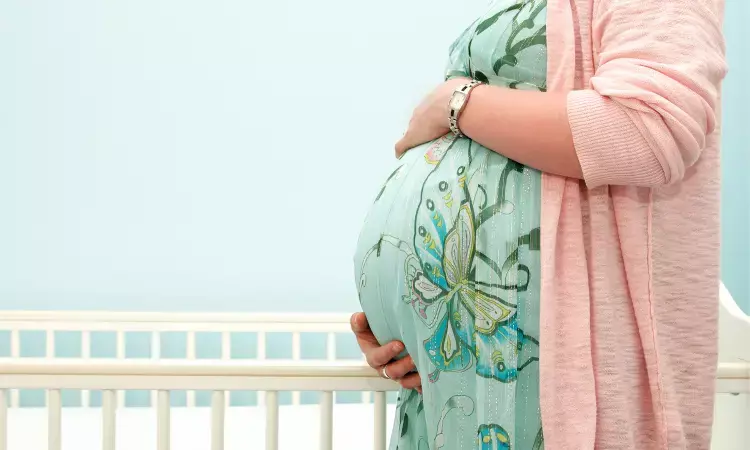- Home
- Medical news & Guidelines
- Anesthesiology
- Cardiology and CTVS
- Critical Care
- Dentistry
- Dermatology
- Diabetes and Endocrinology
- ENT
- Gastroenterology
- Medicine
- Nephrology
- Neurology
- Obstretics-Gynaecology
- Oncology
- Ophthalmology
- Orthopaedics
- Pediatrics-Neonatology
- Psychiatry
- Pulmonology
- Radiology
- Surgery
- Urology
- Laboratory Medicine
- Diet
- Nursing
- Paramedical
- Physiotherapy
- Health news
- Fact Check
- Bone Health Fact Check
- Brain Health Fact Check
- Cancer Related Fact Check
- Child Care Fact Check
- Dental and oral health fact check
- Diabetes and metabolic health fact check
- Diet and Nutrition Fact Check
- Eye and ENT Care Fact Check
- Fitness fact check
- Gut health fact check
- Heart health fact check
- Kidney health fact check
- Medical education fact check
- Men's health fact check
- Respiratory fact check
- Skin and hair care fact check
- Vaccine and Immunization fact check
- Women's health fact check
- AYUSH
- State News
- Andaman and Nicobar Islands
- Andhra Pradesh
- Arunachal Pradesh
- Assam
- Bihar
- Chandigarh
- Chattisgarh
- Dadra and Nagar Haveli
- Daman and Diu
- Delhi
- Goa
- Gujarat
- Haryana
- Himachal Pradesh
- Jammu & Kashmir
- Jharkhand
- Karnataka
- Kerala
- Ladakh
- Lakshadweep
- Madhya Pradesh
- Maharashtra
- Manipur
- Meghalaya
- Mizoram
- Nagaland
- Odisha
- Puducherry
- Punjab
- Rajasthan
- Sikkim
- Tamil Nadu
- Telangana
- Tripura
- Uttar Pradesh
- Uttrakhand
- West Bengal
- Medical Education
- Industry
Management of peripartum iron deficiency anemia reduces maternal hemorrhagic deaths, VTE risk: Study

China: The researchers in a recent study, published in the American Journal of Hematology, observed that iron-deficiency anemia (IDA) during pregnancy is associated with an increased risk of postpartum venous thromboembolism (VTE).
More than 40% of women are reported to have iron deficiency anemia during pregnancy. Gestational IDA confers high risks of pregnancy complications such as preterm birth, preeclampsia, maternal mortality, and stillbirth. Also, VTE, including pulmonary embolism (PE) and deep vein thrombosis (DVT) occurs more significantly during pregnancy with a peak during the postpartum period. The association between IDA and thrombotic events during pregnancy has not been studied.
Against the above background, Hao Ying, Tongji University School of Medicine, Shanghai, People's Republic of China, and colleagues aimed to study the association between IDA at admission for delivery and the postpartum VTE risk associated, as well as the potential pathway through thrombocytosis.
For this purpose, the researchers used a large institutional electronic medical records dataset to describe the rate of thrombocytosis in women at admission for delivery and the frequency of postpartum VTE. This dataset included all women delivering at Shanghai First Maternity and Infant Hospital (SFMIH), Tongji University School of Medicine from Jan. 1, 2019, to Dec. 31, 2021. Over 79,000 women who gave birth in Shanghai, China, were evaluated.
Key findings include:
- A total of 107 women experienced postpartum VTE events.
- Multivariate analysis showed that VTE was associated with anemia, low mean corpuscular volume, low ferritin levels, and thrombocytosis.
- The adjusted odds ratio for VTE appeared to increase as hemoglobin levels decreased. This was independent of VTE prophylaxis, which was offered to women deemed at high risk after cesarean section.
- These findings were controlled in women with baseline thrombotic disorders, blood disorders, or alternative sources of bleeding.
"We observed IDA during pregnancy was associated with increased risk of postpartum VTE," the authors wrote in their conclusion.
"Given the global burden of unrecognized and undertreated IDA during pregnancy, our findings emphasize the clinical implication of prompting identification and appropriate treatment of this common hematologic disorder."
Reference:
Liu X, Liu Y, Qu C, Mol B, Li W, Ying H. The association of iron-deficiency anemia, thrombocytosis at delivery and postpartum venous thromboembolism. Am J Hematol. 2022 Jul 9. doi: 10.1002/ajh.26657. Epub ahead of print. PMID: 35809246.
Dr Kamal Kant Kohli-MBBS, DTCD- a chest specialist with more than 30 years of practice and a flair for writing clinical articles, Dr Kamal Kant Kohli joined Medical Dialogues as a Chief Editor of Medical News. Besides writing articles, as an editor, he proofreads and verifies all the medical content published on Medical Dialogues including those coming from journals, studies,medical conferences,guidelines etc. Email: drkohli@medicaldialogues.in. Contact no. 011-43720751


